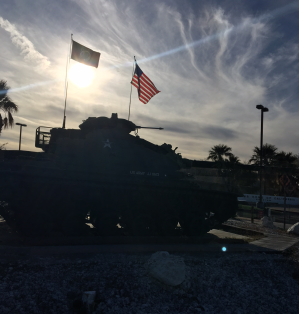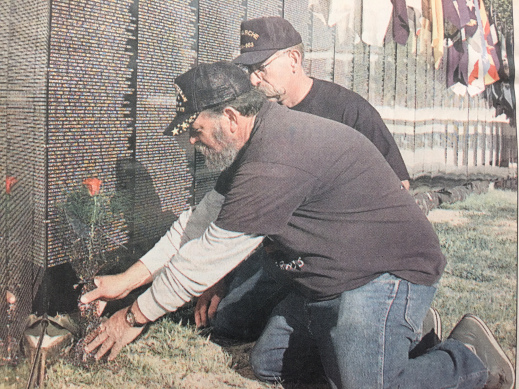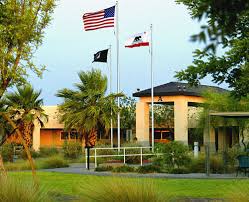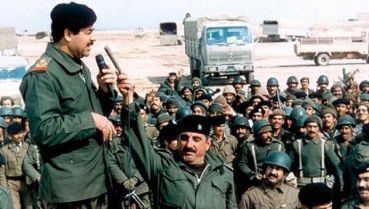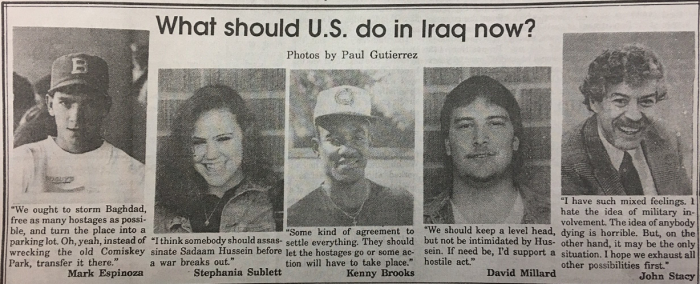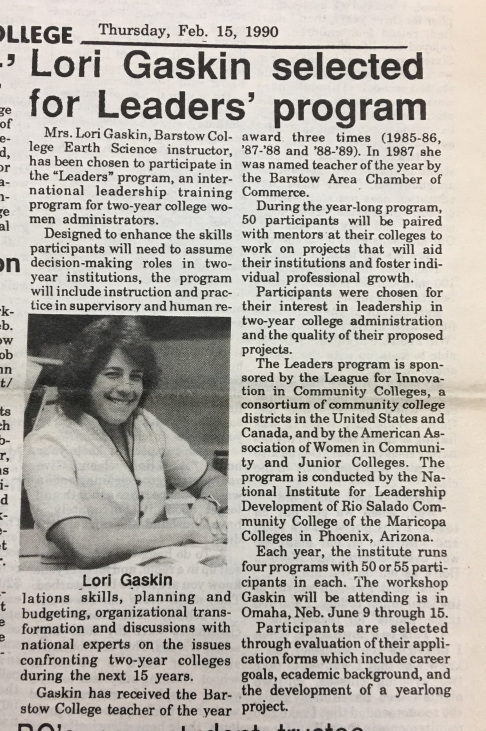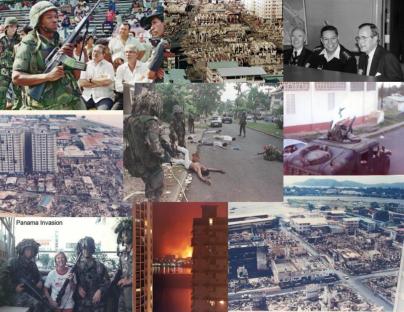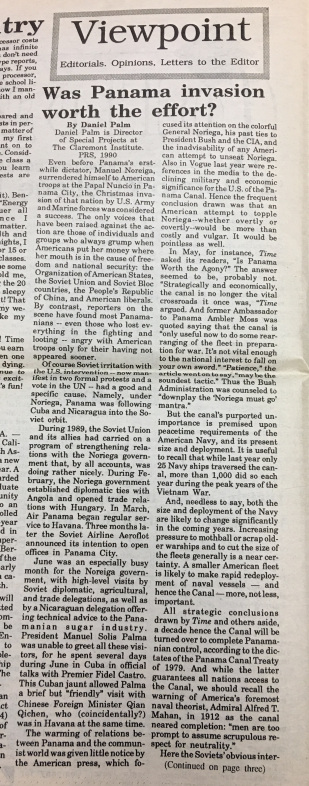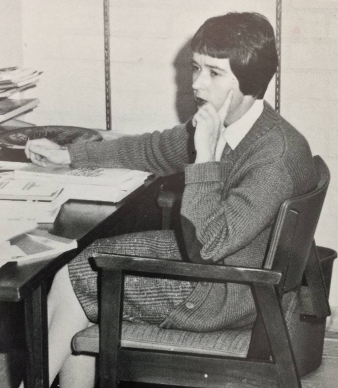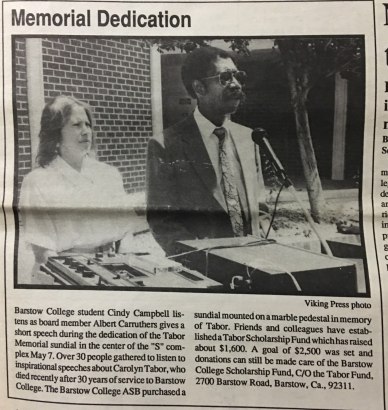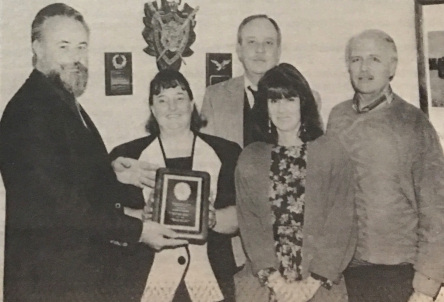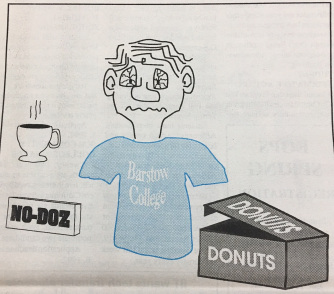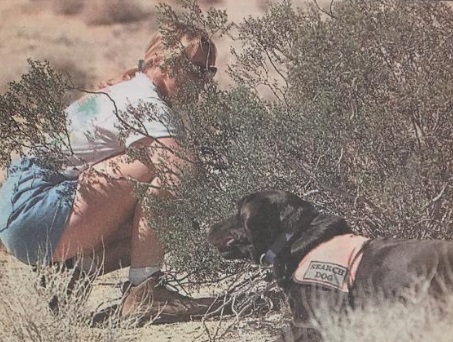1990s History Barstow Community College
The 1990s were a decade of dedicated community awareness, expanding student services, and academic growth for Barstow Community College. In the coming decade and a half, Barstow and the school faced two wars in the Middle East, a moveable remembrance of the Vietnam War (The Wall), a debate over the placement of a California prison, and a host of intellectual and entertainment opportunities. Among these was a visit by world-renown science fiction novelist Ray Bradbury (Fahrenheit 451, Dandelion Wine, The Martian Chronicles) and pianist William Graham, who presented an evening concert of Cole Porter favorites. The college donated land adjacent to the school to serve as the California Veteran’s Home. All in all, the 1990s were an exciting and busy decade for the school.
Barstow College and the California Veterans Home
The California Veterans Home opened its doors in February of 1996. Located adjacent to the college campus, few people realize that the land for the facility was donated by the school to support California’s military veterans.
The veteran’s campus offers housing and medical services to American veterans. The facility has 220 beds for patients and offers small casitas for independent living. Services include intermediate care and skilled nursing care. Primary care is available for center residents.
According to flyers distributed by the center’s administrators, “the veterans home provides veterans with a living environment that protects their dignity and contributes to their feeling of self-reliance and self-worth. Nearby Barstow College offers many cultural and educational opportunities for Home residents to enjoy.”
Barstow College Alumna survives the Iraqi invasion of Kuwait
On August 2. 1990. The Iraqi Army invaded oil-rich Kuwait at the command of Ba’athist dictator Saddam Hussein. Among the hundreds of Americans in the country was Barstow College alumna, Elena Reyes Sakeem. Elena was born and raised in Barstow and met Iraqi national Waleed Sakeem while both were students at Barstow College. She explained that they met in college Spanish class. They wed in 1989 and sometime thereafter, a son was born and they were a little family.
Waleed was offered an oil production job in his native homeland and the family debunked from Barstow for Kuwait City. After Arab tradition, Waleed’s family lived in an extended home. According to Elena, she had the best of both worlds, “I had many English-speaking friends and I had my Kuwaiti family, my in-laws.” (Collegiate, Sept. 27, 1990)
Elena explained that she was amazed at how many Americans were in Kuwait, “especially girls from California. There must have been about 20 of them.” (Collegiate, 1990) Elena explained that she was a member of the International Women’s Club and the American Women’s League. “There were so many English speakers in Kuwait that there was no need to learn Arabic,” she laughed. (Collegiate, 1990)
She explained that since she was bilingual in Spanish and English, she took a job at a language institute in Kuwait City. “The pay was good and it was tax-free,” Elena explained. “But of course, since I was married to a Kuwaiti, I had the Arab side [sic] as well. My sisters-in-law helped me dress in Kuwaiti fashion., I had two lifestyles I had the Western side and then at home with his family, the Kuwaiti side.”
Husband Waleed was beginning work in the oil patch when Iraq invaded. Elena was preparing for a shopping trip when her mother-in-law told her she could not leave the house because a war had started. “It was scary and I didn’t want to believe what I was understanding.” (Collegiate, 1990)
Hussein’s announced intent was to absorb Kuwait as a province of Iraq and then invade Saudi Arabia. Relatives from Arabia telephoned the family to warn them about the Iraqis. “Right when [they] were talking to me, I heard bombs and the house would shake. I was terrified. But I was too nervous to cry.”
Elena immediately telephoned her mother in Barstow. “I didn’t know what to tell her had happened. I didn’t know what was going on myself.”
Elena contacted the American embassy and was told to prepare for evacuation. “I had my bag ready the first day,” Elena explained. Terrified that Iraqis would discover her American identity, Elena essentially hid in the house for five weeks. “A whole month went by before I was evacuated by the embassy. When they called and I got on that plane with my son, I felt like I had won the lottery.”
Elena was able to flee Kuwait with her infant son. Unfortunately, her Kuwaiti husband was forced to stay behind until the conclusion of the First Gulf War.
United States involvement in the war had not officially commenced upon Elena’s return. But the war sabers were rattling in the White House and Congress. “I support United States policy every step of the way,” Elena said. I heard Saddam say he wanted to invade Arabia. I was in Kuwait City when his Army came in and was stealing everything they could get their hands on—street signs, metal, car parts. I support United States intervention.”
College Board approves five-year construction plan
As part of the ongoing college master plan, on Jan. 30, 1990, the college board approved a five-year construction plan. Included in the plan were the construction of a childhood development center, a learning resource center, and a physical education building. Included in the plan was the renovation of campus restrooms to further facilitate access for people with limited mobility. Plans included the building of a performing arts center (which actually did not happen until the second decade of the 21st Century).
Also included in the plan was the conversion of the present library into a student services center, a Fort Irwin Center, and the installation of a new fire emergency watering system. The highest on the priority list was easier access for the disabled.
“Removal of architectural barriers is our first priority,” Dr. John Menzie, college president explained. “We have some bathrooms that are not accessible to the handicapped, and some doors which don’t open for them.’ {Collegiate, Feb. 15, 1990).
Associated Student Body President Valerie Van Dyke said she was “Tickled to death” about the child development center and the learning resource center—both of which were designed to keep up with the continued growth of the school. (Collegiate, 1990)
College Earth Science teacher tapped for International Leaders Program
STUDENT LIFE
In addition to studies and busy social lives, Barstow College students had concerns about America’s role in the geopolitical world. The Iraqi menace in the Middle East and additional United States military adventures in Latin America were points of concern.
In an editorial from the college paper’s Viewpoint section, Daniel Palm, Director of Special Projects at the Claremont Institute, reached out to students for a discussion of the United States invasion of Panama.
“Even before Panama’s erstwhile dictator, Manuel Noriega, surrendered himself to the Papal Nuncio in Panama City, the … invasion of that nation…. Was considered a success.” (Collegiate, 1990)
Palm pointed out that in a world of Glasnost and Soviet-American rapprochement, military actions should be carefully considered. But he maintained that in certain circumstances, military intervention is justified. (See full text below)
Barstow College students split over prison issue
The State of California’s proposal to build a prison in Barstow met with mixed reviews by Barstow College students. STATE Corrections officials met with students on campus prior to a public hearing in Barstow on September 18. Many Barstow college students voiced their opinions about the proposal.
Most students said that they opposed the prison. “One of our main concerns is the water situation at Barstow,” Student activist Katy Yent complained. “They propose to build a prison with two to three thousand inmates. That’s the water we don’t have to spare.”
Among the 100 attendees was Assemblyman Paul Woodruff, who complained, “I’m tired of having the state push Los Angeles toxic waste and unwanted prisoners on the people who make the desert their home.”
But there were supporters of the plan. Barstow College student Valerie Van Dyke voiced her support for the prison. “I’m from an area that had a prison…and we didn’t have the (crime) problems we do here (in Barstow).” (Collegiate, Sept. 17, 1990)
Despite offers for better employment and economic opportunities, in the end, the residents of Barstow and its environs opposed the prison.
Beloved school counselor dies after 30 years of service
Ms. Carolyn Tabor, who served the students of Barstow Community College as a counselor for 30 years, passed away on November 17, 1991. She died at Loma Linda University Hospital. A grief-stricken campus flew flags at half-mast the week of
her demise. The school paper, The Viking Press, dedicated its Nov. 20, 1991, issue to her memory.
College wins $500,000 grant to support the nursing program
Victorville Community Hospital awarded Barstow Community College a grant of half a million dollars to support the school’s nursing program. Funds were to be distributed over a five-year grant period.
“The grant has accelerated our ability to develop the program by a decade,” BCC’s Executive Vice President Ted Baca explained. “We can train people for a job market they can enter immediately.”
Baca explained that one of the school’s missions was to offer vocational education that would ensure employment. Baca pledged that the college would assist nursing graduates with job placement. (Viking Press, March 12, 1992)
Barstow College garners major award for military education
In 1992, Barstow Community College was acknowledged by the California College and Military Education Association with the Institutional Service and Leadership Award for its efforts at Ft. Irwin’s National Training Center. This is the highest award conferred by the association. There were twelve colleges competing for the award.
“To my knowledge, we are the only community college to have ever won 9the award),” Joe Clark, a former Academic Dean of the school explained. “One of the reasons we won is that we developed some innovative programs to meet certain Army and Marine Corps needs. Especially noteworthy was our Military Communications course and the Desert Technology program.” (Viking Press, March 26, 1992)
Ask the Students: Worst Study Habits During Finals Week
Article from the Viking Press, January 15, 1992
THE TOP TEN?
10. Uses class notes to prop wobbly table
9. Washes down NoDoz with jelly donuts and coffee.
8. Spends time study time thinking up excuses for not studying
7. Leaves MTV on while studying then mixes in song lyrics with test answers.
6. Avoids studying all together
5. Decides the day before the final that it’s a good time to get notes together
4. Allows significant over together to “help study”
3. Spills jelly donuts, coffee, and NoDoz on a computer keyboard.
2. Attempts to read book assignments the day before the final.
1. Eats too many M&Ms and goes into a hypoglycemic fog.
SEARCH AND RESCUE ON THE AGENDA
Desert Dispatch
October 11, 1999
Teri Figueroa
Shattered glass litters the car seat and spills onto dirt and pavement as a property manager dives in to aid the trapped driver, pinned between the seat and steering wheel, legs hidden by the displaced engine.
The property manager pulls, yanks, and tugs the car doors too twisted to open. Finally, using a seat belt, a chain, a tire jack, and a delicate balance of care and speed, he pries open the top of the car like a giant tin can. Screaming sirens will bring firefighters and paramedics ready to take over the scene. Removing the victim carefully, and gingerly, the medical teams will go to work. Quietly, the property manager backs away, his job done. Thankfully, it’s just a training scenario, This time.
But it’s this type of training search and rescue team members and volunteering received at the 27th Annual SARS City seminar this weekend in Barstow.
More than 400 volunteers and emergency personnel flooded the campus of Barstow Community College for the three-day event. SAR City is the only kind of training conference of its kind in the Western U.S. and attracts people from as far as Oregon and Utah.
“Training, Training, Training,” SAR Volunteer Sean Logue said of his reason for making the trek from Alameda to SAR City. “And more training.”
Seminars with titles such as confined space rescue, diving accident recovery, training with night vision goggles and tracking techniques, headed up SAR City’s list of more than 50 classes
“You can’t take all of the classes offered in one, two, or even three times coming out here,” volunteer Robert Blandon of Westlake Village said. “That’s why you keep coming back.” This was the first time in SAR City for Renee Bedford, who spends most of her days as a store manager and the rest of her time on call for search and rescue operations. “I was looking most forward to the bone identification class,” the Alameda woman said. “We compared bones to see if they were human or animal, inaccessible,” Bedford said her team was a vital part of the search for 12-year-old Polly Klaas, kidnapped and murdered in Petaluma in 1993. More than 80 percent of the attendees are emergency volunteers, SAR City co-coordinator Rose Proctor said. For many, the emphasis is on the rescue. “We are first in and first out, scenarios,” Deborah Gustafson of the West Lake village disaster response team said. “By doing this training, we understand what is going on. It makes us safer and puts the victim at ease.” Gustafson had just finished the auto extraction exercise taught by Division Chief Lance Milanez of the Barstow Fire Protection District. The scenario is designed to teach students how to pry open a car and pull a victim out using hydraulic cutting and prying tools, or just by using whatever tools may be available in a car. “What if a car is upside down, in the water, or inaccessible? We teach people that if you can’t get in, you have to go to plan B or plan C,” Wes Jaske of the BFPD, said.
Jaske said students learn to pry open a car using the jaws of life or just common tools.
“Students learn to use seat belts and chains and tire jacks to pry open the car. We give people with no tools the power of common sense.”
Proctor said the event is an inexpensive training conference. The $80 fee included a cross-section of class scenarios three meals and a presentation from FBI Special Agent Michael Stapleton on the Polly Klaas kidnapping and murder investigation.
New on the agenda this year was a class about rave parties, and the search and rescue techniques often necessary when dealing with accidents and drug overdoses at the events. Class instructor Barry Nelson said the response from the 114 attendees was overwhelmingly positive.
Overwhelmingly positive seems to describe the feeling of everyone who made their way to SAR City. League, the rescue worker from Alameda, said volunteer emergency work is demanding but rewarding. “ When my pager goes off, I know I have to go,” League, a systems information manager by profession, said. “We don’t want people to know who we are. I just don’t want special credit. We just do it for the satisfaction.” Sitting next to League in Alameda County Sheriff's vehicle, Bedford nodded. “This is my way of doing something positive in a bad situation,” Bedford said.

